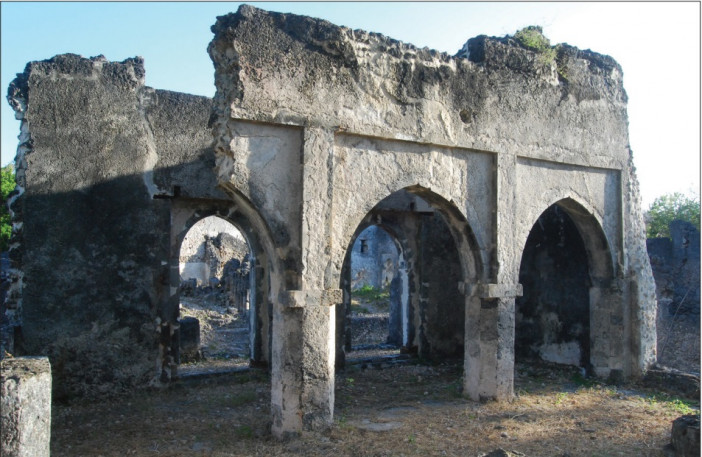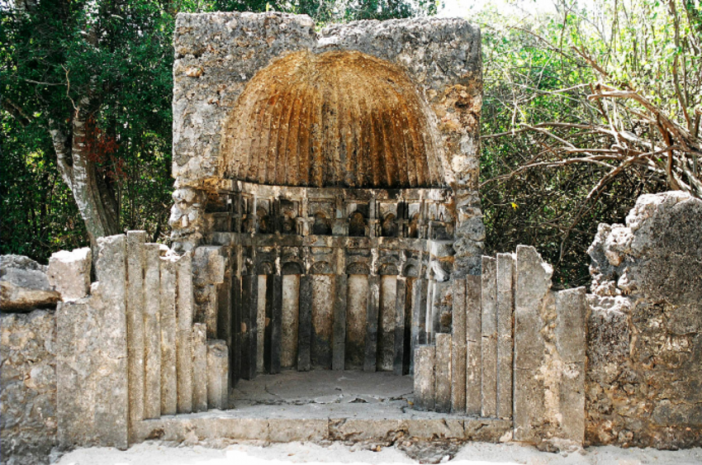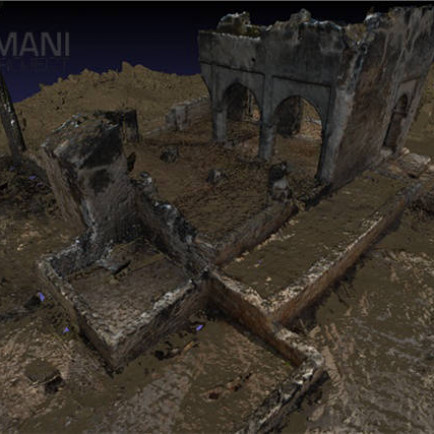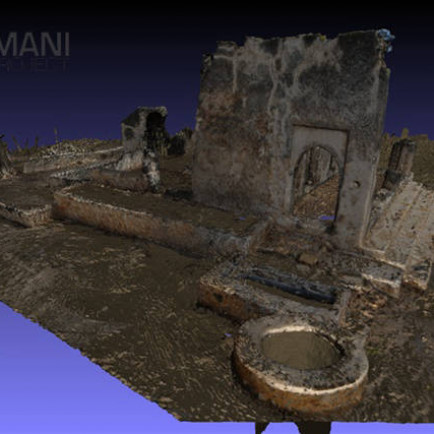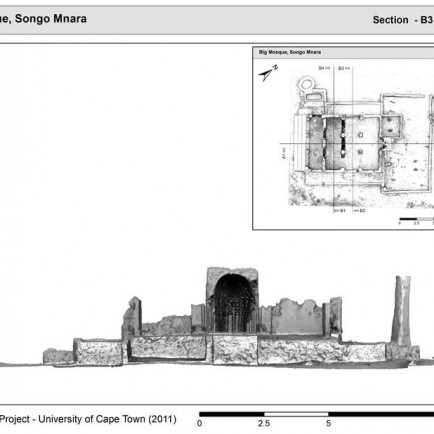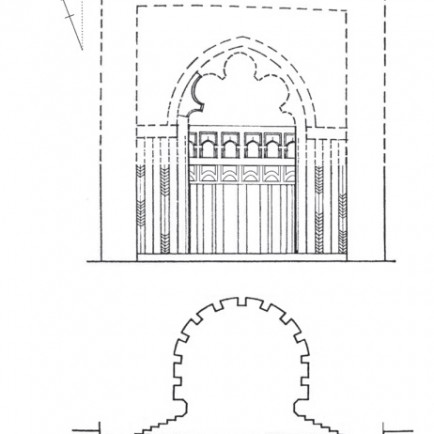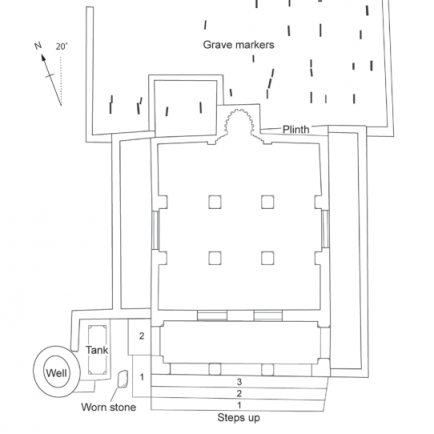Songo Mnara Northeast Mosque
History
The largest and most ornate mosque in Songo Mnara is found in the town's northeastern corner rather than in the center. Archaeologists referred to it as the Main Mosque and the Great Mosque. Its identification as the Friday or Congregational mosque is based more on the scale of the building as a whole than on concrete proof of the presence of a minbar, which could have been made of wood.
Urban and Architectural
The main prayer room is almost square (7.75 x 7.68m), with a 20-degree qibla. It might have held between 75 and 80 worshipers. Four octagonal columns on square bases, which formed a double transverse arcade with engaged columns on the side walls and left the mihrab open to view on its center axis, supported the flat roof. The southern arcade, which is only partially complete, features large arches with the customary apex nick and finely cut porites coral. There were side chambers or verandas to the east and west of the mosque that could have accommodated an additional 115 worshipers by way of side doors. The southern room, which was approached by three stone steps, an extraordinary triple transverse arcade, and two arched doors, served as the entrance to the prayer hall. The well, tank, rubbing stone, and two steps to access the southern room from the west are located in the southwest corner.
The mihrab, which is still visible in some places, was especially ornate, featuring an inner trefoliate arch, six double herringbone-decorated jamb orders, and an apse with carved blind niches. It was supported by an arcade with a fluted semi-dome.
Description
All the floor deposits and the crucial part of the floor where signs of a minbar might have been discovered were destroyed during the mosque's clearing in the 1930s and subsequent work in the 1960s and 2004. When the site underwent conservation work in 2004, it is likely that remains of the ablution area that were not apparent in 1964 were made evident.
There are at least 27 burial memorials, including big sandstone slabs placed as head and foot stones, in the cemetery that is divided into two halves, a smaller and larger enclosure, to the north of the mosque.
References
https://en.wikipedia.org/wiki/Songo_Mnara
https://www.zamaniproject.org/site-tanzania-songo-mnara.html
Details
Location
Ruins of Songo Mnara UNESCO World Heritage SIte, Songa Mnara Island, Tanzania
Worshippers
195
Year of Build
15th Centurey
Area
400
Drawings
Map
History
The largest and most ornate mosque in Songo Mnara is found in the town's northeastern corner rather than in the center. Archaeologists referred to it as the Main Mosque and the Great Mosque. Its identification as the Friday or Congregational mosque is based more on the scale of the building as a whole than on concrete proof of the presence of a minbar, which could have been made of wood.
Urban and Architectural
The main prayer room is almost square (7.75 x 7.68m), with a 20-degree qibla. It might have held between 75 and 80 worshipers. Four octagonal columns on square bases, which formed a double transverse arcade with engaged columns on the side walls and left the mihrab open to view on its center axis, supported the flat roof. The southern arcade, which is only partially complete, features large arches with the customary apex nick and finely cut porites coral. There were side chambers or verandas to the east and west of the mosque that could have accommodated an additional 115 worshipers by way of side doors. The southern room, which was approached by three stone steps, an extraordinary triple transverse arcade, and two arched doors, served as the entrance to the prayer hall. The well, tank, rubbing stone, and two steps to access the southern room from the west are located in the southwest corner.
The mihrab, which is still visible in some places, was especially ornate, featuring an inner trefoliate arch, six double herringbone-decorated jamb orders, and an apse with carved blind niches. It was supported by an arcade with a fluted semi-dome.
Description
All the floor deposits and the crucial part of the floor where signs of a minbar might have been discovered were destroyed during the mosque's clearing in the 1930s and subsequent work in the 1960s and 2004. When the site underwent conservation work in 2004, it is likely that remains of the ablution area that were not apparent in 1964 were made evident.
There are at least 27 burial memorials, including big sandstone slabs placed as head and foot stones, in the cemetery that is divided into two halves, a smaller and larger enclosure, to the north of the mosque.


